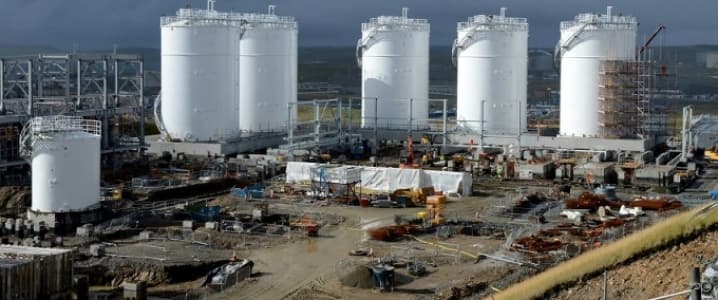Oil prices fell nearly 8 percent this week as speculators rushed for the exit and closed near record long positions.
(Click to enlarge)
Friday, March 10, 2017
Oil prices awoke from their slumber this week, breaking out of a narrow trading range and plunging by more than 8 percent. WTI dipped below $50 per barrel on Thursday, and Brent dropped below $53 per barrel, the lowest levels since early December when the OPEC deal was announced. The reason for the sudden decline was the bearish EIA report, which showed a whopping 8.2 million barrel increase to crude oil inventories, pushing total stocks to another record high. The inventory increases have been consistent throughout 2017, but the combination of rising U.S. oil production and relentless stock builds seems to have finally put a dent in market bullishness.
OPEC outreach to shale comes with warning. At the CERAWeek Conference in Houston this week, OPEC officials made a concerted effort to court U.S. shale players, hoping to smooth over differences in order to cut down on market volatility. OPEC’s Secretary-General dined with shale executives, and met with investment banks to better understand OPEC actions on the market. By all accounts, the meetings have brought an aura of understanding between OPEC and market players. But, to be sure, they are still competitors. Saudi energy minister Khalid al-Falih warned shale companies not to move too quickly, arguing that OPEC would not bail out the shale industry if it makes unjustifiable investments. "He said we and other shale producers should not automatically assume OPEC will extend the cuts,” a shale executive told Reuters. The statement is all the more poignant given the slide in oil prices this week amid concerns of oversupply.
Harold Hamm echoes OPEC’s warning. Continental Resources (NYSE: CLR) CEO Harold Hamm also warned the shale industry not to “kill” oil prices by ramping up too quickly.
Will OPEC extend cuts? Wednesday saw the worst one-day drop in oil prices in over a year. That has added a lot of weight and speculation to OPEC’s production cuts and whether the cartel will extend their deal through the end of the year. OPEC officials said they would wait until May and look at U.S. inventory levels before they decide. But with oil prices already falling, the failure to extend the cuts would mean more losses are to come. “If OPEC doesn’t extend the deal that would be price suicide, plain and simple,” Tamas Varga, analyst at London-based PVM brokerage, told the WSJ. Related: Shell Sells Almost All Canadian Oil Sands Assets
Oil price correction raises risk of speculative-driven downfall. Speculators have built up a record position in net-long bets on crude oil, a position that could unwind with the shift in market sentiment. "It's confirmatory to me that they've thrown in the towel and we're in the process of a pretty big long liquidation at the moment that should carry us all the way down, I think, to the November lows of $42. We'll retrace the entirety of the rally from November to just recently," John Kilduff, founding partner at hedge fund Again Capital, told CNBC. Kilduff says crude oil could fall to $42 per barrel by the end of April.
Repsol announces Alaska discovery of 1.2 billion barrels. Spanish oil company Repsol SA (OTCMKTS: REPYY) announced a 1.2 billion barrel oil discovery on Alaska’s North Slope after drilling two wells with its partner Armstrong Oil & Gas Inc. Repsol says that the oil could begin flowing by 2021 and produce 120,000 bpd. Alaska has been suffering declining output and the state has been hemorrhaging tax revenue as a result. Also, the Trans-Alaskan Pipeline has seen oil flows fall to dangerously low levels. Repsol’s new discovery could buy the state some time.
Worst week for commodities in months. Oil prices dropped to their lowest levels in months, but the entire commodities sector also suffered a terrible week. Metals and grains also posted their sharpest weekly decline in quite some time. Persistent supply gluts and ongoing concerns about the strength of Chinese demand have deflated what have been strong rallies since the fourth quarter of 2016.
Libya’s oil production falls again. Turmoil near Libya’s major oil export terminals cut into production figures this week, pushing output down to 620,000 bpd, a decline of 30,000 bpd from last week and 80,000 bpd from January and February levels. Libya was thought to present a downside risk to the oil market because of expectations of rising levels of production, but violence and supply disruption could have the opposite effect on the market this year.
Shell warns oil industry faces threat from waning public acceptance. Royal Dutch Shell (NYSE: RDS.A) CEO Ben van Beurden said that the oil industry faces an existential threat if it continues to lose public trust. "I do think trust has been eroded to the point where it starts to become a serious issue for our long term future," he said at the CERAWeek conference in Houston. Shell supports carbon taxes and also said that it would increase investment in renewable energy to $1 billion over the next few years.
Shell to sell off almost all of its oil sands assets. Shell announced on March 9 that it would seek to reduce its stake in key oil sands projects from 60 to 10 percent. Shell will sell its assets to Canadian Natural Resources (NYSE: CNQ) for an estimated $7.25 billion. The move is a sign of the shrinking appetite that international companies have for Canada’s high-cost oil sands. It is also part of Shell’s multiyear divestment campaign to pay down debt.
By Tom Kool of Oilprice.com
More Top Reads From Oilprice.com:
- Iran And Iraq To Ramp Up Oil Production Despite OPEC Cuts
- U.S. Shale Kills Off The Oil Price Rally
- Is The Oil Price Plunge A Turning Point?
























